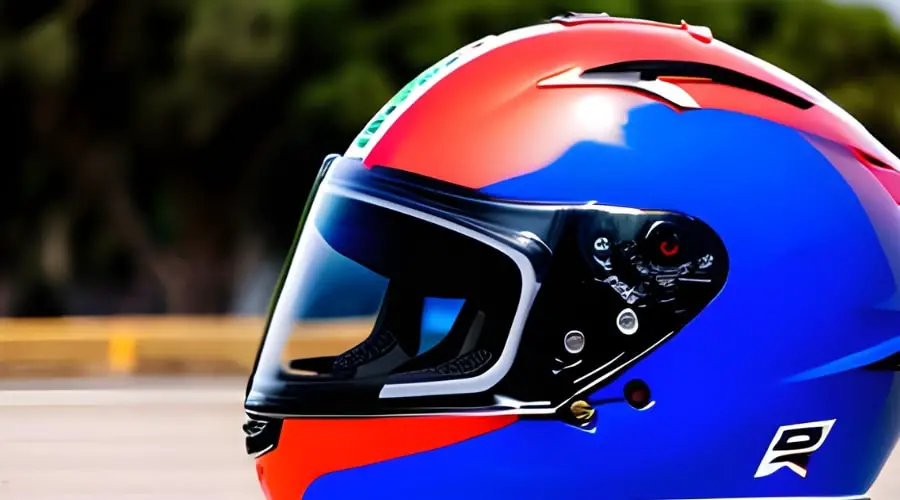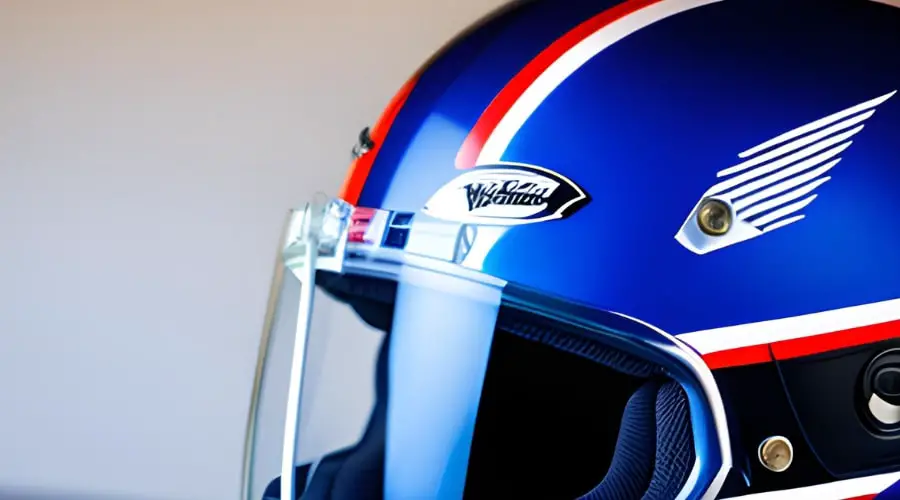Choosing the right full-face helmet is a crucial decision for anyone looking to ensure their safety while riding a motorcycle or engaging in any high-impact activity. With a wide range of options available in the market, it’s essential to consider several factors before making a purchase. This article will guide you through the process of choosing a full-face helmet that suits your needs, providing valuable insights and expert tips to help you make an informed decision.
When it comes to protecting your head during motorcycle rides or other adrenaline-fueled activities, a full-face helmet offers the highest level of protection. It covers your entire face, providing essential safeguarding against potential impacts and injuries. However, not all helmets are created equal, and selecting the right one requires careful consideration of various aspects. Let’s explore the key factors you should keep in mind while choosing a full-face helmet.
Safety Standards for Full-Face Helmets
Ensuring the safety of your head is paramount when selecting a full-face helmet. Look for helmets that meet established safety standards, such as those set by organizations like the Department of Transportation (DOT), the European Committee for Standardization (ECE), or the Snell Memorial Foundation. These standards ensure that the helmet has undergone rigorous testing for impact resistance and penetration, providing you with a reliable level of protection.

Helmet Fit and Sizing
A properly fitting helmet is crucial for both comfort and safety. To determine your helmet size, measure the circumference of your head using a measuring tape. Refer to the manufacturer’s sizing chart to find the appropriate size for your head circumference. Once you have the right size, try on the helmet and ensure a snug fit. The helmet should fit comfortably around your head without feeling too tight or too loose. It should sit level on your head, covering your forehead without obstructing your vision. Pay attention to the cheek pads and chin strap, as they contribute to the overall fit and stability of the helmet. Remember, a properly fitting helmet enhances both safety and comfort.
Helmet Construction and Materials
Understanding the construction and materials used in full-face helmets is essential to make an informed choice. Most helmets consist of an outer shell, an impact-absorbing liner, and a comfort liner. The outer shell, typically made of materials like fiberglass, carbon fiber, or polycarbonate, provides the first line of defense against impacts. The impact-absorbing liner, usually made of expanded polystyrene (EPS), cushions the head during a crash. The comfort liner, made of soft and moisture-wicking materials, enhances your overall wearing experience.
Ventilation and Airflow
Ventilation plays a crucial role in ensuring comfort and visibility during rides. Look for helmets with well-designed ventilation systems that allow for sufficient airflow. These systems typically include intake vents at the front and exhaust vents at the back, promoting air circulation and preventing fogging. Evaluate the effectiveness of the ventilation system by considering the number and placement of vents and how easily you can adjust them while wearing the helmet.
Visor and Face Shield
The visor or face shield of a full-face helmet serves multiple purposes. It protects your eyes from wind, debris, and UV rays while enhancing visibility. Opt for helmets with visors that offer a wide field of vision and have anti-scratch and anti-fog properties. Some helmets also feature transition lenses or built-in sunshields to provide convenience and adaptability to changing light conditions. Consider your specific riding conditions and preferences when choosing the type of visor or face shield that suits you best.
Additional Features and Accessories
Full-face helmets often come with additional features and accessories that can enhance your riding experience. Look for helmets with noise reduction features, such as noise-canceling padding or aerodynamic designs, to reduce wind noise. Consider helmets that have built-in communication systems integration, allowing you to connect with other riders or listen to music while on the road. Quick-release mechanisms for the chin strap offer convenience, while ample padding adds comfort and reduces pressure points.
Helmet Weight and Comfort
Long rides can become fatiguing, especially if your helmet is heavy and ill-fitting. Strike a balance between weight and protection by choosing a helmet that offers adequate safety without being overly burdensome. Look for helmets that distribute weight evenly and have ergonomic designs to minimize strain on your neck and shoulders. Additionally, consider features like moisture-wicking liners, removable and washable pads, and adjustable vents to ensure maximum comfort during extended rides.
Helmet Style and Design
Full-face helmets come in a variety of styles and designs to cater to different preferences and riding disciplines. Whether you prefer a sleek and aerodynamic racing helmet or a more classic and retro design, there is a helmet style for everyone. Consider the purpose of your rides and choose a style that aligns with your aesthetic preferences while still offering the necessary safety features.
Price Range and Budgeting
Set a budget for your full-face helmet purchase while keeping in mind that it is a long-term investment in your safety. Consider the value for money, balancing the helmet’s features, safety certifications, and overall quality with your budget constraints. It’s important to strike a balance between affordability and the level of protection and comfort you seek.

Reviews and Recommendations
Before making a final decision, research and read product reviews from reputable sources. Online platforms and motorcycle communities often provide valuable insights from real-world experiences. Additionally, seek recommendations from experienced riders or trusted individuals who can offer guidance based on their own helmet choices and experiences. They can provide valuable firsthand information about different helmet brands, models, and their performance in real-world scenarios. Consider their feedback and take note of any recurring positive or negative aspects mentioned.
Maintenance and Care
Proper maintenance and care of your full-face helmet are crucial for its longevity and continued effectiveness. Follow the manufacturer’s guidelines for cleaning and storing the helmet. Use mild soapy water and a soft cloth to clean the outer shell and visor, ensuring you remove any dirt, bugs, or debris. Avoid using harsh chemicals or abrasive materials that may damage the helmet’s finish or integrity. Store the helmet in a cool, dry place away from direct sunlight and extreme temperatures. Additionally, it’s important to replace your helmet after a significant impact or crash, even if there are no visible signs of damage.
Related: How do I choose a safe bike helmet?
Frequently Asked Questions:
1. Can I use a full-face helmet for other activities besides motorcycle riding?
Yes, full-face helmets can provide protection for various activities such as motocross, mountain biking, snowboarding, and more. Ensure the helmet meets the specific safety standards and requirements for the activity you intend to use it for.
2. How often should I replace my full-face helmet?
It is generally recommended to replace your helmet every five years, even if it hasn’t been involved in any accidents. Over time, the helmet’s materials may degrade, compromising its ability to protect you adequately.
3. Can I customize my full-face helmet with stickers or paint?
While it is possible to customize your helmet, it is essential to follow the manufacturer’s guidelines. Avoid using any adhesive or paint that could damage the helmet’s shell or compromise its structural integrity.
4. Are expensive helmets always safer than budget-friendly options?
Price is not the sole indicator of a helmet’s safety. Both expensive and budget-friendly helmets can meet safety standards. However, higher-priced helmets often offer additional features, improved comfort, and advanced technology, which may be desirable for some riders.
5. Can I purchase a helmet online without trying it on first?
Ideally, it is recommended to try on a helmet before making a purchase to ensure proper fit and comfort. However, if you are familiar with the brand and its sizing, purchasing online can be a viable option. Make sure to check the seller’s return policy in case the helmet doesn’t fit as expected.
Conclusion
Choosing the right full-face helmet is a decision that should not be taken lightly. By considering factors such as safety standards, helmet fit and sizing, construction materials, ventilation, visors, additional features, comfort, style, price range, and recommendations, you can make an informed choice that meets your specific needs and preferences. Remember, your helmet is your primary defense against potential head injuries, so prioritize safety above all else. Ride with confidence, knowing that you have chosen a reliable and well-fitting full-face helmet to protect you during your thrilling adventures on the road.
Helmetslab is a website that focuses on providing in-depth reviews and information about different types of helmets, including motorcycle helmets and others helmets. I am writing a post with proper research on the info that helps helmet users.

